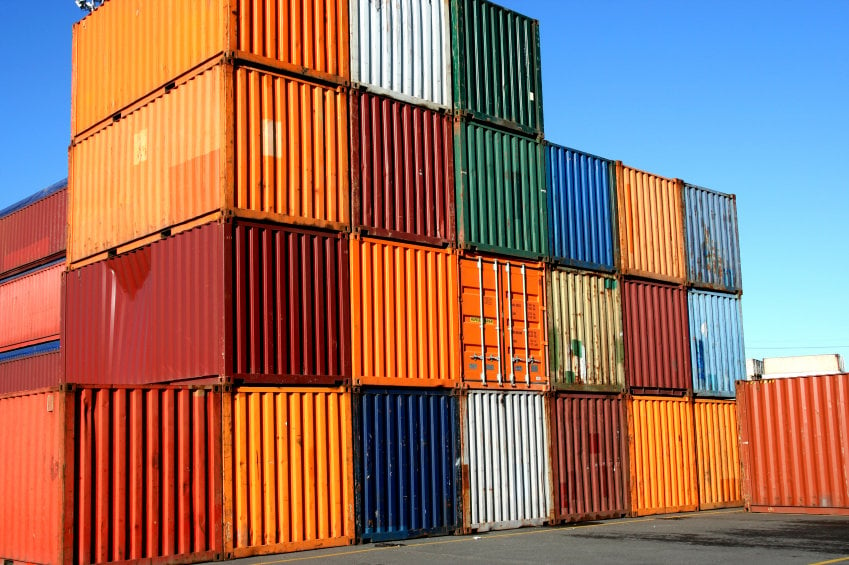Many of us working in the logistics industry often daydream about solutions to everyday problems, and naturally think of technology as our saving grace. Although, one would think that technology should play a major role in how business of international logistics is conducted. That simply isn’t the case today. The inconvenient truth is that the logistics industry is not an innovator and logistics technology generally lags behind the rest of the commerce world. Unlike almost all other industries, we have not created any processes that can redefine the industry like what Uber has done to the for hire car service industry or what Airbnb has done to short term rental accommodation.
Technological innovations in logistics can change how the world does business. All aspects of how the logistics industry functions can be dramatically enhanced by technology. From increased affordability and efficiency of the transportation management system (TMS) to the application of Bluetooth technology for superior tracking of product movements, 2017 could be the year in which technology becomes an integral, if not the exclusive, part of the shipping process.
Many of us now perceive heavy usages of technology as being a manufacturer-only realm. Breakthroughs in technological advances in logistics are further pushing the bounds on what we see as normal shipping standards. Looking forward, we can foresee the following logistics technological trends becoming the dominant factors for 2017.
The Transportation Management System Becomes More Prevalent
First, we could soon see The Transportation Management System becoming more prevalent and affordable. Historically, only shippers with extraordinarily high volume could take advantage of TMS. For many smaller shippers, utilizing a TMS was simply too costly. However, the rise of the cloud based logistics solutions has changed that. The rise of software-as-a-service, or SaaS, applications will further level the playing field between large and small to medium-sized shipping companies. Previous TMS systems were located on site, compared to today’s TMSs tend to focus more on cloud & web-based systems, which are easily accessible, and by far less costly to deploy and maintain. As explained by Bridget McCrea of Supply Chain 24/7 logistics blog, the return on investment for TMS cloud-based solutions has, on average, experienced a positive growth of 7.5 percent. This logistics technology helps shippers allocate funds and bring forth savings to their transportation budgets.
The Use of Autonomous Vehicles and Drones Increases Greatly
Next, we could also see the use of autonomous vehicles and drones increase dramatically. Over the past few years, the use of drones has become increasingly common. When Amazon announced that it was planning to eventually use drones to deliver products, the drone industry took flight. According to Amazon, Prime Air will eventually deliver products within 30 minutes of being ordered. Although, this new type of logistics technology is not yet ready for roll out on a massive scale, there are great strides being made. Intel recently announced that it set a world record for having the most unmanned aerial vehicles, flown in a single location, at the same time.
As explained by Alexa Cheater, Google announced in 2011 plans to develop an autonomous, or self-driving car. In early 2015, Apple announced plans to ship its first self-driving car – albeit far from ready today – in 2019. As more companies become more involved in the idea and benefits of a self-driving truck, the role of this technology will become increasingly linked with the logistics industry. It will also save money on fuel costs, which results in savings of the cost of shipping.
For example, a self-driving truck may lock onto a truck in front of it, which would result in a train effect for the shipment. At first, this doesn’t seem like it would logically save any fuel costs. However, a procession of trucks moving in tandem, at a safe distance from one another, and able to communicate with one another in the event of a blow out, accident, or other event, would help to reduce drag on the overall caravan, which results greater fuel efficiency.
The Use of Robots will Change Logistics Technology
Lastly, the use of robots in warehousing, loading, unloading, and delivery will increase in 2017. Have you missed anything about the sale of robots for logistics technology purposes recently? A few years ago, Kiva robots seem to be rolling out everywhere. Then, Amazon purchased Kiva, and they vanished. Amazon uses these robots exclusively for internal production. However, this has not stopped other robotic inventors from working to create similar systems that do not impinge on the Kiva patent, asserts Steve Banker of Forbes Magazine. The GreyOrange Butler robotic systems take the leg work out of the picking process by bringing shelves to the pickers, and Fetch Robotics Freight has developed a mobile base and a mobile picking robot to make the physical workload of manually picking items and placing them in a given tote simpler and less strenuous. There are many other types of robotic systems in development, and more are being created to make the logistics industry run more technologically efficient. 2017 should see an increase in the use of robotic technology in all aspect of logistics including warehousing, loading and unloading.
Ultimately, third-party logistics providers (3PLs) and other shipping entities are looking towards the insurance industry for the successful roll out of these new advances in technology. Historically, the insurance industry’s approval has led to some of the most successful roll outs of assisted-driving technologies in the market. For example, when the insurance industry approved the use of GPS and traction control measures in vehicles, the application of these logistics technologies became widespread within a few years. With all of these developments, the future of logistics technology is certainly exciting looking forward.
- 102shares
- 64LinkedIn




